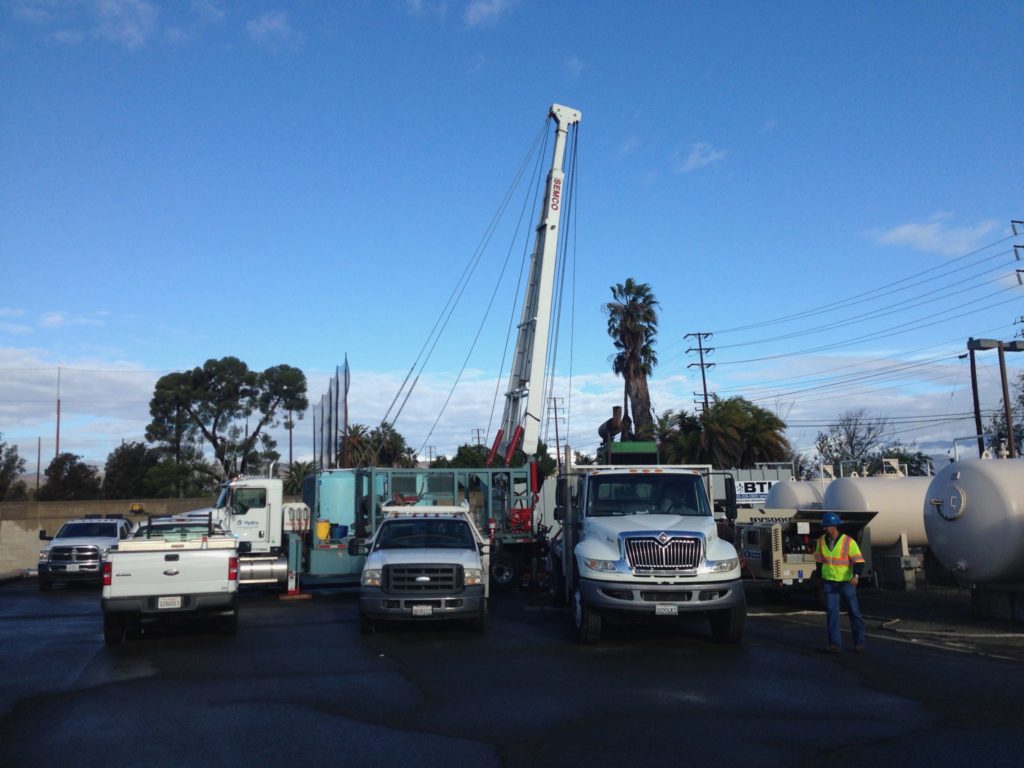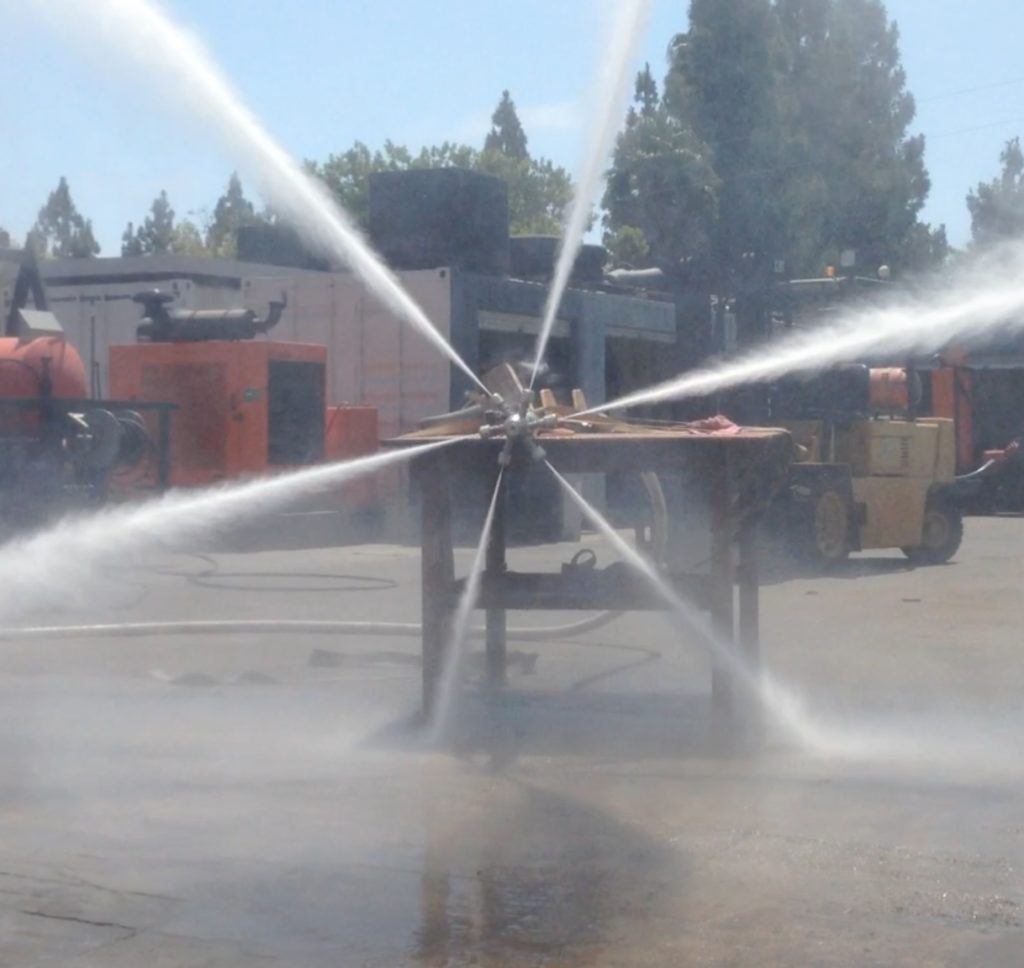How WellJet Works
It is one thing to generate pressure at the surface – and quite another to deliver it 1,000 feet below ground. WellJet’s proprietary delivery and internal tool design provide both the high downhole pressures and laminar flow needed to open up the perforations and stimulate the gravel pack.
Hydrojetting has been around for decades. But prior to WellJet, it was not possible to generate sufficient downhole pressure to dislodge stubborn deposits. Some tenacious strains of iron bacteria and other minerals adhere to steel inside a well at up to 15,000 psi. It is necessary for any water jet to exceed that pressure to truly make a difference.

On steel wells, WellJet operates at between 16,000 and 20,000 psi – more than enough to break up even the toughest bacterial deposits. Since the yield strength of mild and stainless steel ranges between 35,000 and 55,000 psi, and since the WellJet tool is in constant motion when under load, the risk of damaging casing or perforated areas is minimal — especially in view of the fact that all elements of the WellJet process (tool size, pressure, retrieval rate, etc.) are adjustable, to suit individual well conditions.
An array of nozzles, mounted on a self-rotating head, emits this highly-pressurized water in a laminar flow, not only clearing obstructions inside the well screen, and opening clogged perforations, but penetrating deep into the filter zone and near-wellbore formation – dislodging the harmful deposits that are often the true cause of inadequate performance.
The tool treats 100% of the perforated area and penetrates into the gravel pack where the real obstructions are frequently found.
Following WellJet treatment, the dislodged material is typically pulled from the outside the casing with a dual- or multi-swab surge block, and then evacuated from the bottom of the well via airlift, bailing or pump development.
The result is sector-disruptive performance, the world’s most effective method for water well rehabilitation.
WellJet is to ailing wells as penicillin was to sick humans in the 1940s. There is simply nothing else like it.
Three Steps for Success
WellJet® recommends this three-step process for a successful well rehabilitation:

1) Analysis – well data, water sample + downhole video. Well data provides information about the well, formation and local hydrological conditions. The water sample reveals what kinds of bacteria are present in the well. WellJet® can provide sample kits upon request. The downhole video shows how badly the perforations are obstructed, and if any breaks or other damage are visible.
2) Open Pathways – the WellJet® tool and delivery mechanism are lowered into the well to the bottom of the perforated area. The assembly is pressurized and hydraulically retrieved. The jets clear obstructions from the entire perforation zone and penetrate into the gravel pack and near-wellbore formation to break up deposits and open pathways for water flow.
3) Removal of Dislodged Material – WellJet® recommends surging with a tightly-fitted dual-swab surge block to draw the dislodged material out of the gravel pack and into the bottom of the well, where it can be removed by airlift, bailer bucket or pump development.

